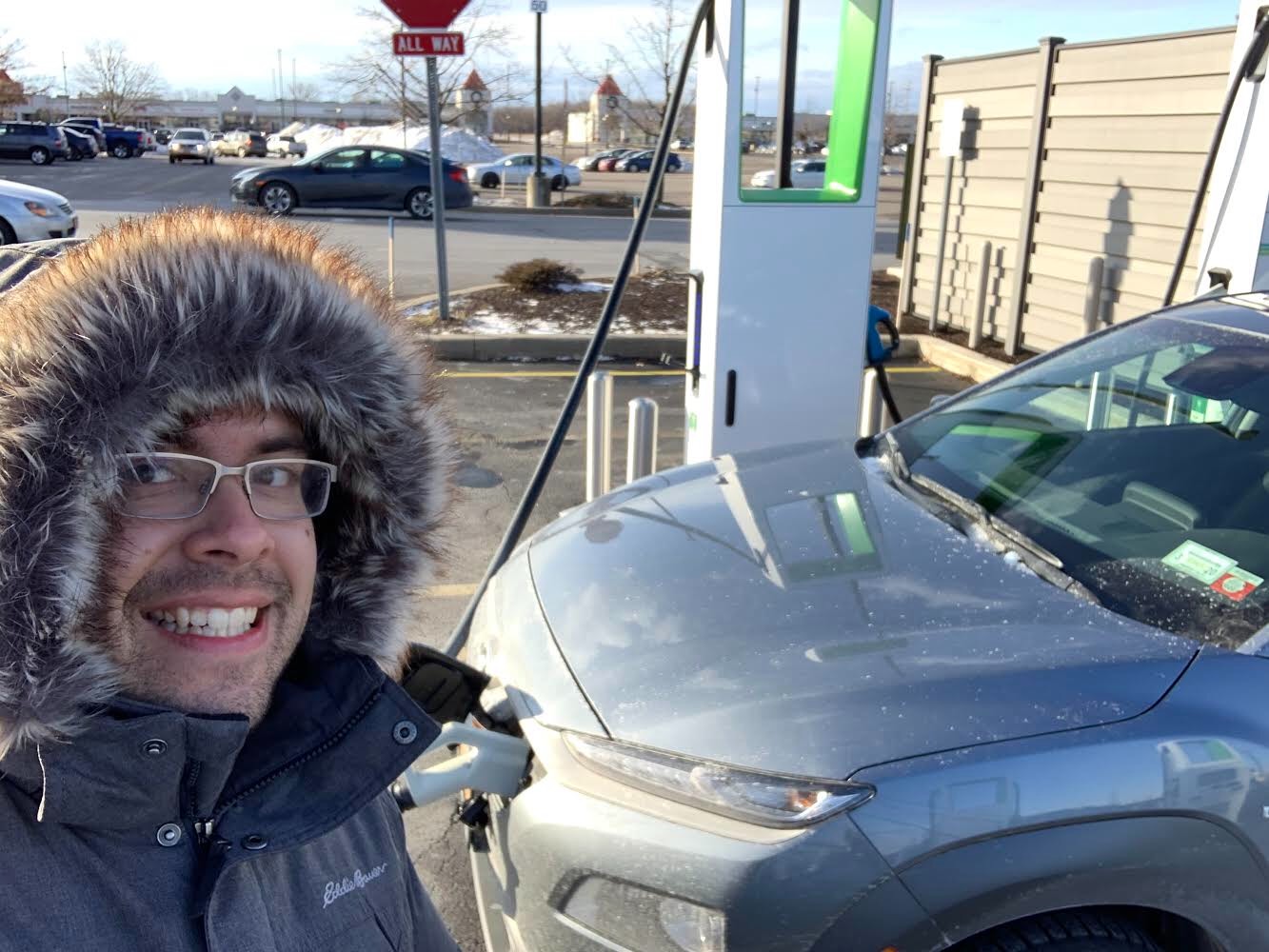
Sierra Club organizer David Alicea charging his EV in western New York
To meet our climate challenge, we’ve got to plug in almost everything that moves. And we need the charging infrastructure to do it. We know that our electric utilities have the motive and means to help make that a reality. More importantly, we know that transportation electrification done right benefits everyone by reducing toxic tailpipe pollution and lowering electricity rates.
That’s why, for the last seven years, Sierra Club has worked alongside electric utilities, consumer advocates and other allies to secure more than a billion dollars to electrify vehicles of all kinds, deploy much-needed EV charging, and connect clean cars with clean electricity.
Now, for the first time, these groups with often divergent interests have come together to release a joint statement that spells out our common goal of transportation electrification and supports action by electric utilities to accelerate it.
The joint statement from the Sierra Club, the Illinois Citizens Utility Board, National Consumer Law Center, Edison Electric Institute, and the Natural Resources Defense Council is available here.
This new accord establishes important common ground among environmental, consumer advocates, and utilities. Critically, the statement explains how utility involvement can and must deliver benefits to all customers, particularly those in communities most impacted by air pollution and facing burdensome household energy costs.
Why does this matter?
To put it simply: Environmental advocates, consumer advocates, and electric utilities don’t often agree on much. When we do, we won’t always say it out loud. This joint statement puts our shared transportation electrification goals front and center and will help guide the growing number of conversations nationwide as utilities, regulators, and interested stakeholders work to prepare for an electric future and maximize its benefits.
In particular, the joint statement explains how to ensure that transportation electrification benefits “those in communities that are burdened disproportionately by local air pollution from the transportation sector and low-income households that spend a disproportionate share of their income on vehicle fuel and maintenance.”
It describes how utility programs can be designed to meet that goal and gives metrics that can be used to track utilities’ success, such as improving grid utilization to put downward pressure on electricity rates, improving access to clean transportation in low-income communities, and enhancing household energy security.
Articulating common goals and defining metrics helps us move toward better aligning utilities’ incentives with delivering societal benefits.
What’s next?
To date, utilities and others have invested or committed to about $2 billion in electric vehicle charging infrastructure in the US, across red, blue, and purple states. But analysis shows that we need upwards of $6 billion in additional EV infrastructure investment by 2025 to be on track to meet our climate goals.
The Sierra Club will continue to work tirelessly in state utility commissions across the country to develop forward-looking investments in transportation electrification, working together with allies of all kinds, likely and unlikely.
We plan to bring the joint statement principles into those conversations, using them to ensure that future programs center equity and justice, are intentional about serving low-income and vulnerable customers, and maximize the benefits of transportation electrification for communities that have suffered most from dangerous tailpipe pollution and roller-coaster oil prices for too long.
Finally, it’s important to note that the new joint statement builds on another one: the Transportation Electrification Accord, an effort initiated by the Sierra Club and many partners to spell out collective principles for utility action to support EVs.
There are more than 150 signatories to the accord, representing a remarkable diversity of actors. Between the accord and the new statement, there's a lot of agreement on bold ideas.
Now we need to turn those bold ideas into bold action.